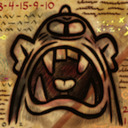VelvetViolet
Adventurer
There’s a blog that critiques AD&D monster manuals:

 your-dungeon-is-problematic.tumblr.com
your-dungeon-is-problematic.tumblr.com
Personally, sphinxes stand out to me because some of them reproduce through rape. So I’m quite glad that 5e turned them into celestials summoned into existence by prayer or divine fiat.
Your Dungeon Is Problematic
Trying to dissect the rhetoric of your Monster Manual to find all the racism against monsters,...
Personally, sphinxes stand out to me because some of them reproduce through rape. So I’m quite glad that 5e turned them into celestials summoned into existence by prayer or divine fiat.


